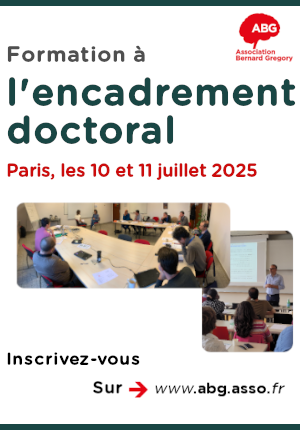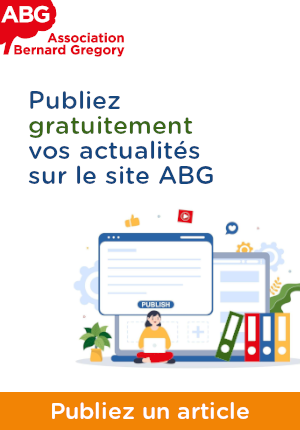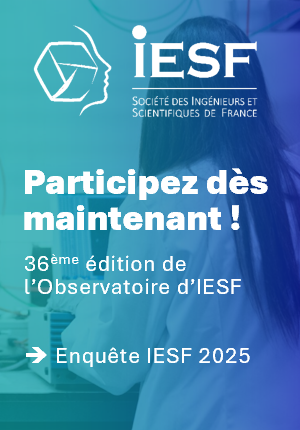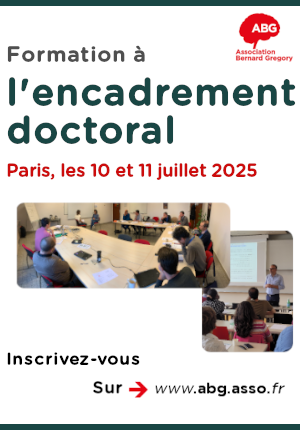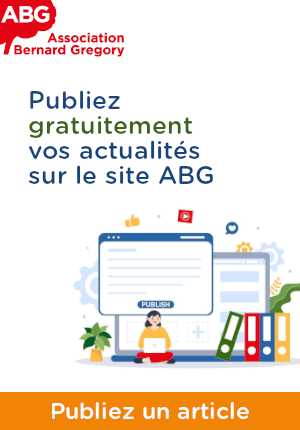Conditions et processus de (re)distribution des métaux critiques dans la croûte continentale : effets de l'orogenèse calédonienne sur la mise en place des minéralisations de Sulitjelma et de Bleikvassli (Norvège) // Conditions and processes for the (re)di
|
ABG-131262
ADUM-65222 |
Thesis topic | |
| 2025-04-18 | Public funding alone (i.e. government, region, European, international organization research grant) |
Université de Savoie Mont-Blanc
LE BOURGET DU LAC Cedex - France
Conditions et processus de (re)distribution des métaux critiques dans la croûte continentale : effets de l'orogenèse calédonienne sur la mise en place des minéralisations de Sulitjelma et de Bleikvassli (Norvège) // Conditions and processes for the (re)di
- Ecology, environment
Ressources minérales, pétrologie, géodynamique, géochimie, géochronologie, modélisation
Mineral resource, petrology, geodynamics, geochemistry, geochronology, modeling
Mineral resource, petrology, geodynamics, geochemistry, geochronology, modeling
Topic description
Dans le cadre de la transition énergétique, l'Europe est confrontée à un défi majeur : garantir l'accès aux matières premières critiques nécessaires aux nouvelles technologies bas carbone. Cette thèse vise à comprendre les processus de (re)mobilisations des métaux critiques (indium, gallium et germanium) et leurs relations avec la déformation, le métamorphisme et les circulations fluides associées, afin d'évaluer l'influence du contexte géodynamique sur les concentrations en métaux. Ce projet de thèse, qui s'intègre dans le projet ANR CMiO (Critical Metals in Orogens 2024-2028, piloté par B. Cenki, Université de Montpellier), se focalisera sur les districts miniers de Sulitjelma (Cu-Zn) et de Bleikvassli (Pb-Zn-Cu) situés dans la chaine des Calédonides en Norvège, où des travaux de prospection ont montré des teneurs importantes en métaux critiques. Pour comprendre les relations entre minéralisations-métamorphisme-déformation-fluides de l'échelle du minéral à l'échelle géodynamique, cette thèse s'appuiera sur (i) une approche de terrain (cartographie, géologie structurale, échantillonnage), (ii) des études pétrologiques et minéralogiques fines, (iii) l'estimation des conditions de pression et de température du métamorphisme et des circulations de fluides minéralisteurs, (iv) la datation des circulations hydrothermales et du métamorphisme, et éventuellement (v) une modélisation thermo-mécanique à grande échelle. Des analyses in situ seront privilégiées (plateformes analytiques de Géosciences Montpellier et ISTerre Grenoble)
------------------------------------------------------------------------------------------------------------------------------------------------------------------------
------------------------------------------------------------------------------------------------------------------------------------------------------------------------
In the context of the energy transition, Europe faces a major challenge: guaranteeing access to the critical raw materials needed for new low-carbon technologies. This PhD aims to understand the (re)mobilization processes of critical metals (indium, gallium and germanium) and their relationships with deformation, metamorphism and associated fluid circulation, in order to assess the influence of the geodynamic context on metal concentrations. This PhD project, which is part of the ANR CMiO project (Critical Metals in Orogens 2024-2028, led by B. Cenki, Université de Montpellier), will focus on the Sulitjelma (Cu-Zn) and Bleikvassli (Pb-Zn-Cu) mining districts of the Caledonides chain in Norway, where mine prospects has revealed significant levels of critical metals. To understand the relationships between mineralization-metamorphism-deformation-fluid circulation from the mineral scale to the geodynamic scale, this PhD will rely on (i) field investigations (mapping, structural geology, sampling), (ii) detailed petrological and mineralogical studies, (iii) estimation of metamorphic and mineralizing fluid pressure and temperature conditions, (iv) dating of hydrothermal circulation and metamorphism, and possibly (v) large-scale thermo-mechanical modeling. Preference will be given to in situ analyses (analytical platforms of Géosciences Montpellier and ISTerre Grenoble).
------------------------------------------------------------------------------------------------------------------------------------------------------------------------
------------------------------------------------------------------------------------------------------------------------------------------------------------------------
Début de la thèse : 01/10/2025
------------------------------------------------------------------------------------------------------------------------------------------------------------------------
------------------------------------------------------------------------------------------------------------------------------------------------------------------------
In the context of the energy transition, Europe faces a major challenge: guaranteeing access to the critical raw materials needed for new low-carbon technologies. This PhD aims to understand the (re)mobilization processes of critical metals (indium, gallium and germanium) and their relationships with deformation, metamorphism and associated fluid circulation, in order to assess the influence of the geodynamic context on metal concentrations. This PhD project, which is part of the ANR CMiO project (Critical Metals in Orogens 2024-2028, led by B. Cenki, Université de Montpellier), will focus on the Sulitjelma (Cu-Zn) and Bleikvassli (Pb-Zn-Cu) mining districts of the Caledonides chain in Norway, where mine prospects has revealed significant levels of critical metals. To understand the relationships between mineralization-metamorphism-deformation-fluid circulation from the mineral scale to the geodynamic scale, this PhD will rely on (i) field investigations (mapping, structural geology, sampling), (ii) detailed petrological and mineralogical studies, (iii) estimation of metamorphic and mineralizing fluid pressure and temperature conditions, (iv) dating of hydrothermal circulation and metamorphism, and possibly (v) large-scale thermo-mechanical modeling. Preference will be given to in situ analyses (analytical platforms of Géosciences Montpellier and ISTerre Grenoble).
------------------------------------------------------------------------------------------------------------------------------------------------------------------------
------------------------------------------------------------------------------------------------------------------------------------------------------------------------
Début de la thèse : 01/10/2025
Funding category
Public funding alone (i.e. government, region, European, international organization research grant)
Funding further details
Concours pour un contrat doctoral
Presentation of host institution and host laboratory
Université de Savoie Mont-Blanc
Institution awarding doctoral degree
Université de Savoie Mont-Blanc
Graduate school
634 Sciences Ingénierie Environnement
Candidate's profile
Le.la candidat.e doit être titulaire d'un Master en Géosciences, avec une expérience de recherche en lien avec les systèmes orogéniques (tectonique et pétrologie métamorphique) ou en métallogénie (minéralogie, géochimie, géologie économique). L'étudiant.e devra avoir de solides compétences en travail sur le terrain (échantillonnage, pétrologie, minéralogie, géologie structurale) et/ou géologie structurale et/ou pétrologie, minéralogie et/ou géochimie et/ou géochronologie et/ou métallogénie appliqués aux domaines crustaux profonds et/ou aux minéralisations. La connaissance de méthodes d'analyse des roches silicatées et/ou des minéralisations (pétrographie optique, Microsonde électronique, LA-ICP-MS, EBSD) sont essentielles pour ce sujet. Une expérience ou un fort intérêt en modélisation numérique thermo-mécanique est souhaitable.
Le.la doctorant.e devra travailler en collaboration entre des institutions françaises et européennes (Université de Montpellier, Université Grenoble-Alpes, BRGM en France ; Høgskole på Vestlandet et Norges Geologiske Undersøkelse – Service géologique norvégien- en Norvège ; et Luleå Tekniska Universitet en Suède). Une maîtrise de l'anglais est attendue dans un projet impliquant également des collaborations internationales et une valorisation des travaux scientifiques dans des revues internationales.
The candidate must hold a Master's degree in Geosciences, with research experience related to orogenic systems (tectonics and metamorphic petrology) or metallogeny (mineralogy, geochemistry, economic geology). The student should have strong skills in fieldwork (sampling, petrology, mineralogy, structural geology) and/or structural geology and/or petrology, mineralogy and/or geochemistry and/or geochronology and/or metallogeny, with applications to deep crustal domains and/or mineralization systems. Proficiency in analytical methods for silicate rocks and/or mineralized systems (optical petrography, electron microprobe, LA-ICP-MS, EBSD) is essential for this project. Experience with, or a strong interest in, thermo-mechanical numerical modeling is also desirable. The PhD candidate will work within a collaborative framework involving both French and European institutions, including Université de Montpellier, Université Grenoble-Alpes, and BRGM in France; the Western Norway University of Applied Sciences and the Geological Survey of Norway (NGU) in Norway; and Luleå University of Technology in Sweden. A good command of English is required, as the project involves international collaborations and aims for scientific dissemination through international peer-reviewed journals.
The candidate must hold a Master's degree in Geosciences, with research experience related to orogenic systems (tectonics and metamorphic petrology) or metallogeny (mineralogy, geochemistry, economic geology). The student should have strong skills in fieldwork (sampling, petrology, mineralogy, structural geology) and/or structural geology and/or petrology, mineralogy and/or geochemistry and/or geochronology and/or metallogeny, with applications to deep crustal domains and/or mineralization systems. Proficiency in analytical methods for silicate rocks and/or mineralized systems (optical petrography, electron microprobe, LA-ICP-MS, EBSD) is essential for this project. Experience with, or a strong interest in, thermo-mechanical numerical modeling is also desirable. The PhD candidate will work within a collaborative framework involving both French and European institutions, including Université de Montpellier, Université Grenoble-Alpes, and BRGM in France; the Western Norway University of Applied Sciences and the Geological Survey of Norway (NGU) in Norway; and Luleå University of Technology in Sweden. A good command of English is required, as the project involves international collaborations and aims for scientific dissemination through international peer-reviewed journals.
2025-05-31
Apply
Close
Vous avez déjà un compte ?
Nouvel utilisateur ?
More information about ABG?
Get ABG’s monthly newsletters including news, job offers, grants & fellowships and a selection of relevant events…
Discover our members
 SUEZ
SUEZ  CASDEN
CASDEN 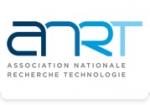 ANRT
ANRT  CESI
CESI  Institut Sup'biotech de Paris
Institut Sup'biotech de Paris  MabDesign
MabDesign  Nokia Bell Labs France
Nokia Bell Labs France 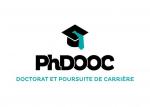 PhDOOC
PhDOOC  Ifremer
Ifremer  Aérocentre, Pôle d'excellence régional
Aérocentre, Pôle d'excellence régional  TotalEnergies
TotalEnergies  ONERA - The French Aerospace Lab
ONERA - The French Aerospace Lab  MabDesign
MabDesign 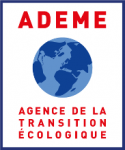 ADEME
ADEME  Laboratoire National de Métrologie et d'Essais - LNE
Laboratoire National de Métrologie et d'Essais - LNE  Groupe AFNOR - Association française de normalisation
Groupe AFNOR - Association française de normalisation  Généthon
Généthon  Tecknowmetrix
Tecknowmetrix  ASNR - Autorité de sûreté nucléaire et de radioprotection - Siège
ASNR - Autorité de sûreté nucléaire et de radioprotection - Siège

